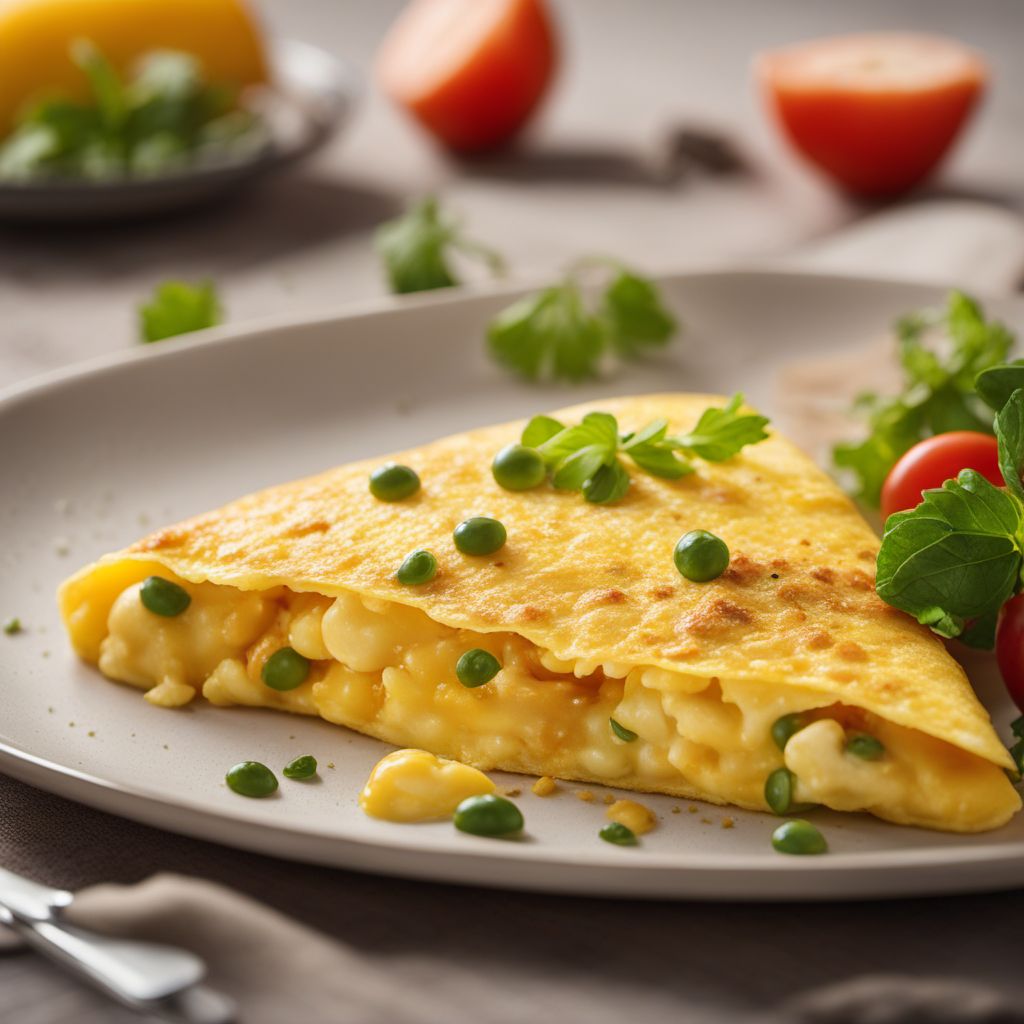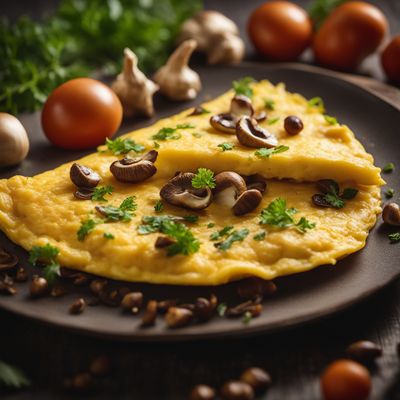
Ingredient
Omelette, plain
The Classic Breakfast Staple: Plain Omelette
A plain omelette is a dish made by whisking eggs and cooking them in a pan until they are set. It is a simple yet delicious dish that can be enjoyed on its own or filled with various ingredients such as cheese, vegetables, or ham. The plain omelette is a popular choice for breakfast or brunch and is loved for its fluffy texture and delicate flavor.
Origins and history
The exact origins of the omelette are unclear, but variations of this dish can be found in many cultures around the world. Omelettes have been enjoyed for centuries and are often associated with French cuisine. They have since become a beloved breakfast dish in many countries, with each region adding its own twist to the recipe.
Nutritional information
A plain omelette is a good source of protein and essential nutrients such as vitamins A, D, and B12. It is also low in carbohydrates and can be a healthy option when prepared with minimal oil or butter.
Allergens
Eggs are a common allergen, and individuals with egg allergies should avoid consuming plain omelettes or any dishes containing eggs.
How to select
To select the best eggs for making a plain omelette, choose eggs that are fresh and free from cracks. Check the expiration date on the carton and ensure that the eggs are stored in a refrigerated section of the store. If possible, opt for organic or free-range eggs for a higher quality and more flavorful omelette.
Storage recommendations
To maintain the freshness and quality of eggs, store them in the refrigerator. Keep them in their original carton to protect them from absorbing odors and flavors from other foods. It is best to use eggs within 3-5 weeks of purchase.
How to produce
Producing a plain omelette at home is relatively simple. Whisk together eggs, salt, and pepper in a bowl until well combined. Heat a non-stick pan over medium heat and add a small amount of oil or butter. Pour the egg mixture into the pan and cook until the edges are set. Gently lift the edges of the omelette with a spatula and tilt the pan to allow the uncooked eggs to flow to the edges. Once the omelette is mostly set but still slightly runny in the center, fold it in half and cook for another minute. Slide the omelette onto a plate and serve immediately.
Preparation tips
When preparing a plain omelette, it is important to use a non-stick pan to ensure easy flipping and prevent sticking. Adding a small amount of milk or cream to the egg mixture can result in a creamier texture. Experiment with different fillings such as cheese, herbs, vegetables, or cooked meats to customize your omelette to your liking.
Culinary uses
A plain omelette is a versatile dish that can be enjoyed on its own or paired with various accompaniments. It is commonly served for breakfast or brunch and can be enjoyed with toast, bacon, sausages, or a side of fresh fruit. It can also be used as a base for more elaborate dishes such as omelette soufflés or frittatas.
Availability
Plain omelettes are available worldwide and can be found in most restaurants or cafes that serve breakfast or brunch. They are also easy to prepare at home with just a few simple ingredients.




